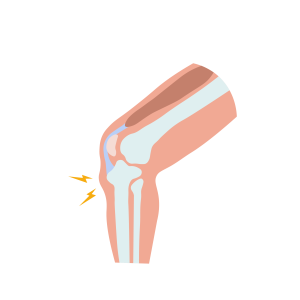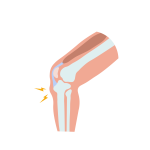Dr. Mehdi Abd Al-Sahib – Orthopedic Surgeon
A back bag is a bag used by students to carry their books and school supplies. Children struggle with these heavy bags for their 12 years of education.
First: The weight of the bag:
In 1977, german researchers suggested that the back bag must not exceed 10% of the person’s body weight. Carrying more than that is too heavy for a child and causes pain in the neck, back, shoulders, ribs, legs, and feet. Heavyweight also affects the child’s walking negatively. It may develop into a change in the body structure, such as the deviation of the spine, which accompanies the child throughout his life, and this may lead to a change in the heart rate and restriction of lung movement when breathing. It is worth noting that many of these complications do not appear immediately, but may appear in your thirties or even forties.
Second: How the bag is carried:
(1) Carrying the bag asymmetrically, ie, in one hand or on one shoulder.
Carrying a school bag asymmetrically every day means asymmetric effort on one side without the other, and it’s a major cause of neck, shoulder, and back pain and may cause severe damage to the spine and human body, and it could become chronic. If the child has to carry the bag by hand, he must switch on both hands constantly.
(2) Carry the bag symmetrically on your back and shoulders.
When carrying the bag on the back and shoulders, the center of the bag’s mass will be behind the center of the body’s mass. In order to maintain the stability of the body, the torso bends forward, which increases the pressure on the spine. When returning to a straight position, severe stress is put on the vertebrae and the back muscles supporting them, which leads to cramps and pain in the neck, shoulders, and lower back. The suspenders of the bag should be flexible, wide, well-padded and not too long so that it falls below the waist level, thus putting pressure on the back, and not being too tight to restrict the person’s ability to breathe. The use of the hip belt reduces the weight on the back to a large extent by transferring the weight to the lower back and abdominal area.
(3) Wheeled bags:
This type cannot be dragged on a dirt road and is difficult to move on stairs, crowded lanes, and on buses. They’re useful for students who don’t have to climb the stairs to get to their classroom. It must be taken into account that the handle of the bag that the child holds should be long enough so that he does not have to twist or bend, and that the wheels are large enough so that the bag does not shake or tip over during movement.
In conclusion, all bags are considered harmful if they are heavy. Carrying them on one shoulder is the most harmful. Back bags and shoulder bags are the best while adhering to the above specifications.
Third: How long the bag is carried:
Recent studies confirm that carrying a school bag for more than 30 minutes a day is undesirable and unhealthy.
Fourth: Age:
The impact on students’ health varies across age groups. But there is a particular concern for students in the first grades of middle schools (between 12-14 years of age). This is a critical period because the spine is at a critical stage of development and at this stage, the weight of the bag in comparison to body weight is likely to be high because some students are still small in size. High school students for the most part have a risk of experiencing more physical effort because they move between floors with their school bags in order to attend different classes and laboratories. In contrast, primary school students are taught all subjects in one classroom.
Fifth: Gender:
Studies show that back and neck pain and musculoskeletal disorders are more common among females than males.










